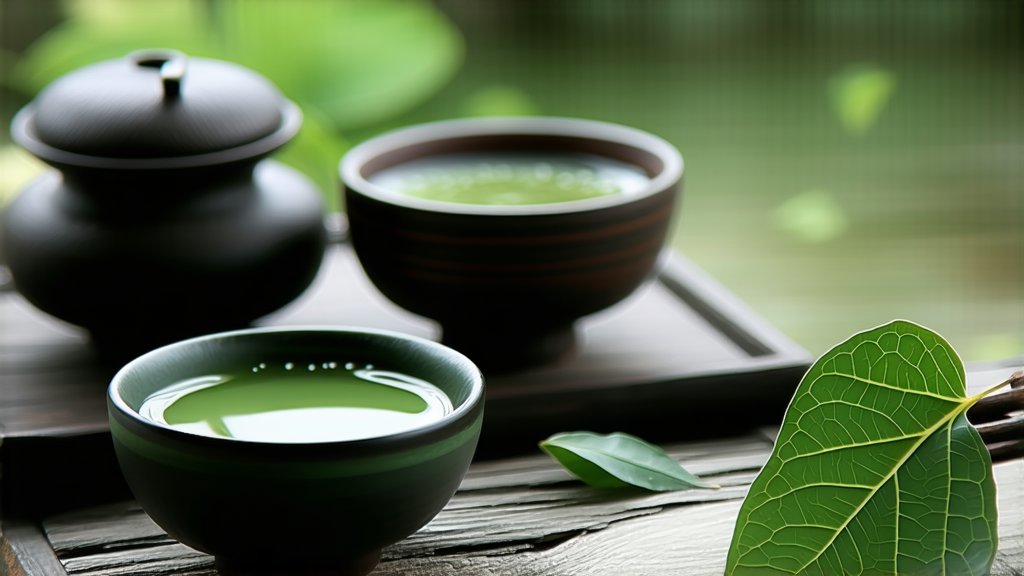
Tieguanyin, often referred to as the "Fairy Iron Goddess," stands as one of the most revered and enigmatic varieties within the vast spectrum of Chinese oolong teas. This exquisite tea hails from the Anxi region in Fujian Province and has captivated tea enthusiasts worldwide with its unique flavor profile and aromatic complexity. In this exploration, we delve into the rich history, diverse types, meticulous craftsmanship, and sophisticated art of tasting that define Tieguanyin tea.
Historical Background
The origins of Tieguanyin date back to the early 18th century during the Qing Dynasty. According to legend, the tea was discovered by a poor scholar named Wei Yin who found a divine tea plant in his dreams. Upon waking, he ventured into the mountains and stumbled upon the very same plant. Cultivating and processing the leaves, he created a tea so extraordinary that it earned him a top quality in the imperial examinations, hence the name "Tieguanyin" (Iron Goddess of Mercy), symbolizing both the strength of iron and the compassion of a goddess.
Varieties of Tieguanyin
Tieguanyin is not a monolithic variety but encompasses several sub-varieties, each with distinct characteristics:
- Xiangpi Zhong: Known for its fragrant orchid-like aroma and smooth taste.
- Chengxiang Mi Lan: Offers a more pronounced floral fragrance with hints of honey.
- Shuixian: Features a richer, fuller body with a slightly roasted flavor.
- Bada Xuan: Known for its large, robust leaves and strong, lasting aftertaste.
- Jin Xuan: A hybrid variety prized for its milky, creamy notes and vibrant green color.
Each variety is a testament to the adaptability and innovation inherent in Chinese tea culture, showcasing the diversity within the Tieguanyin category.
The Craftsmanship of Tieguanyin
The production of Tieguanyin is an artisanal process that demands precision and expertise. Here’s an overview of the key steps involved:
- Harvesting: Only the tenderest buds and leaves are handpicked, typically during the morning hours when the essential oils are at their peak.
- Withering: The freshly picked leaves are spread out in thin layers under the sun or in well-ventilated rooms to reduce moisture content and initiate oxidation.
- Fixation: The withered leaves are then quickly fried or pan-fired to halt oxidation, preserving the greenish hue and locking in the aromatic compounds.
- Rolling: The fixed leaves are rolled between bamboo mats to form tight spirals, enhancing the extraction of flavor during brewing.
- Oxidation: The rolled leaves undergo controlled oxidation, a delicate balance between green and black tea processes, giving Tieguanyin its distinctive oolong character.
- Roasting: Multiple rounds of roasting over charcoal or electric ovens refine the flavor profile, impart subtle smoky notes, and reduce moisture for longevity.
- Sorting and Packaging: Finally, the dried tea is sorted by grade and packaged carefully to maintain freshness until it reaches the consumer.
The Art of Tasting Tieguanyin
Tasting Tieguanyin is an experience that engages all the senses. Here are some guidelines for appreciating this exceptional tea:
- Preparation: Use a Yixing clay teapot or a Gaiwan for optimal flavor expression. Rinse the leaves briefly with hot water to 'wake' them up.
- Water Temperature: Boil water to around 90-95°C (194-203°F) to extract the best flavors without scorching the delicate leaves.
- Infusion Time: Steep for approximately 30 seconds to 1 minute for the first infusion, increasing gradually for subsequent ones. Tieguanyin can be infused multiple times, each revealing different facets of its complexity.
- Observation: Note the tea's color, which should range from light golden to amber, and the unfurling of leaves, which should display a vibrant green hue.
- Aroma: Inhale deeply before sipping to detect the tea's floral, fruity, or roasted aromas. Tieguanyin is renowned for its orchid-like fragrance.
- Taste: Sip slowly, allowing the tea to coat your palate. Pay attention to the initial sweetness, mid-palate complexity, and the lingering aftertaste, which should be clean and refreshing.
- Texture: Feel the tea's mouthfeel – it should be smooth and velvety, indicative of high-quality processing.
Tieguanyin is more than just a beverage; it embodies centuries of tradition, artistry, and a deep connection to nature. As you embark on your journey through this enchanting world of tea, remember that each cup tells a story, inviting you to savor not only its taste but also the rich cultural heritage it represents.